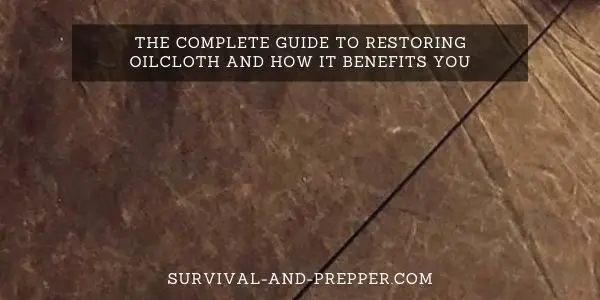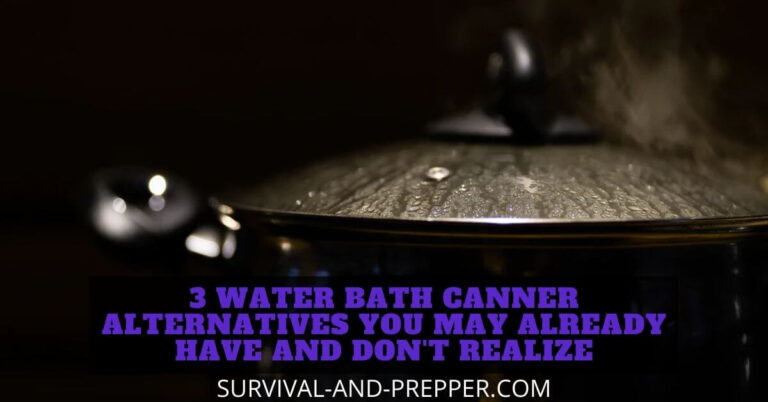The Complete Guide to Restoring Oilcloth and How It Benefits You
Introduction: Why Restore Your Oilcloth?
So you have your favorite oilcloth tarp and have noticed that it doesn’t quite provide the same weather resistance it used to.
You find yourself wondering if it would be better to restore your tarp or simply replace it.
This is one of those questions that only you can answer, but let’s look into the benefits of caring for and restoring oilcloth.
Assuming that you have a traditional oilcloth that was made using linseed oil then you can reapply the coating if you have noticed signs of leaking in your cloth.
The main advantage to restoring the cloth is the preservation of the cloth itself. Being very similar to an aged leather jacket, or waxed cotton canvas, oilcloth will develop a patina of its own.
Most traditional oilcloth tarps are made by bushcrafters or reenactors in a method to keep them as true to the original as possible. Due to this it is possible that you cannot find a replacement made in the traditional manner.
Much of the oilcloth available today is not actually oilcloth in the traditional sense. It is cotton cloth coated with PVC plastic, this is seen in table clothes and other similar items.
Almost all traditional oilskin is made using a cotton or linen cloth coated with linseed oil and allowed to dry. Linseed oil and its faster drying boiled linseed oil are both readily available at many hardware stores and the process to recoat it only takes a short time.
The biggest drawback to restoring your oilcloth is the amount of time it takes to dry after being recoated, however with the use of mineral spirits this time can be greatly reduced.
With that being said, let’s look into how you go about restoring oilcloth.
Different Kinds of Oilcloths You May Encounter
There are several different fabrics that might be known by the name of oilcloth or oilskin.
These include waxed cotton canvas, traditional oilskin, and modern PVC coated oilcloth.
Waxed Cotton Canvas is not actually oilcloth in the traditional sense, as it is coated with beeswax in addition to an oil. Waxed Canvas has its own steps for restoring it though it is similar in nature to oilcloth.
Modern PVC oilcloth is most commonly found on table cloths among other things, one side will be a soft cotton like material while the other side is plastic feeling like vinyl. These are difficult to repair and the results are usually less than desirable. It is easiest just to replace this type of cloth as the cost is relatively low in most cases.
Traditional oilcloth is very similar in nature to waxed canvas and short of tears can be recoated relatively easily.
Even in the case of a tear you can often patch this with minimal detrimental effects to the protection provided, though a patch would be visible and may be an undesired effect.
Step-by-step Guide on How to Restore Your Traditional Oilcloths
In order to restore a traditional oilskin, make sure that you have cleaned it properly. (Care and Cleaning of Oilskin Tarps)
Once that is done, create a mixture of ¾ boiled linseed oil and ¼ mineral spirits to speed the drying process. If you wish to match the color of your tarp tint an area you can add some powdered pigment to the mix to give it the tint you desire.
(Note if recreating a jacket, hat, boots or other garment do not use the mineral spirits. The boiled linseed oil will still dry, but it will take longer, this will avoid the odor associated with mineral spirits. Keep in mind though that most garments produced nowadays are actually waxed canvas and not traditional oilskin.
Lay your oilskin out flat and coat the fabric evenly with a small brush for garments or a larger brush or roller for tarps. Depending on the desired effect, you may want to apply a second coat in 24 hours.
Allow the cloth to remain outside in a covered area until it is dry to the touch and does not have a sticky feel.
If you accidentally use regular linseed oil instead of boiled, it will still dry but may take several weeks before it does not have a sticky feel. This is why it is important to use boiled linseed oil.
Oilskin Tear Repair
Oilskin Tarps with a tear in them can be repaired by stitching a patch over them.
In order to accomplish this you want to obtain two portions of material consistent with your tarp about 4 inches larger in each direction than the tear.
Folding the edges of these patches under so that they will not fray, place one on either side of your oil skin tarp. Stitch these about ½ inch from the seam all the way around.
Once that is complete make a second pass around the outer edge of the patch stitching within about 1/8th of an inch of the edge. This will help to avoid the patch snagging on anything in the future.
A final stitching in a double x through the middle of the patch is recommended to provide strength and tie all three layers together. I prefer to do this in a double row about an inch or so apart depending on the size of the patch.
As a final step, coat both sides of the patch with a mixture of boiled linseed oil and mineral spirits in order to waterproof the patch.
Conclusion: Why Choose Restoration over Replacement?
Restoring your oilcloth is a relatively simple process assuming it is not ripped, and given the fact that it is very difficult to replace unless you make it yourself, most often you are going to find that restoring, or reconditioning your oilskin cloth is the best way to go.
If you are simply looking for a new tarp, you can easily pick up a cheaper PVC tarp at a local hardware store, but it is neither as durable, nor has the history that a well made and aged oilskin has.






